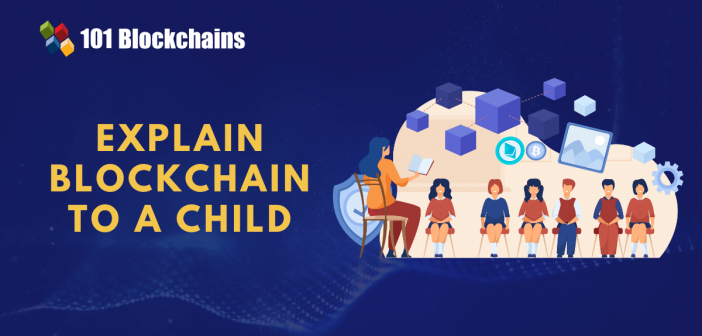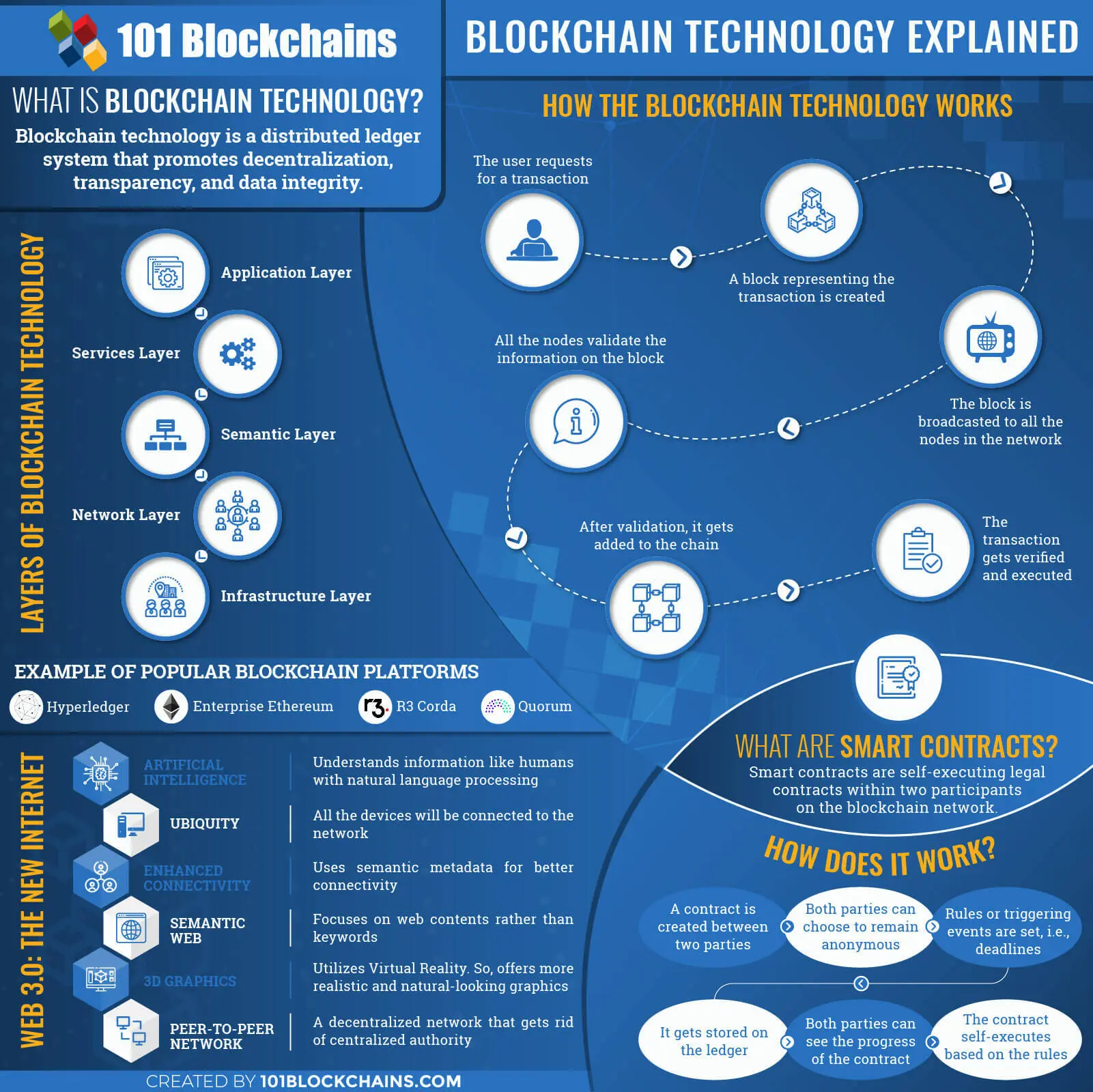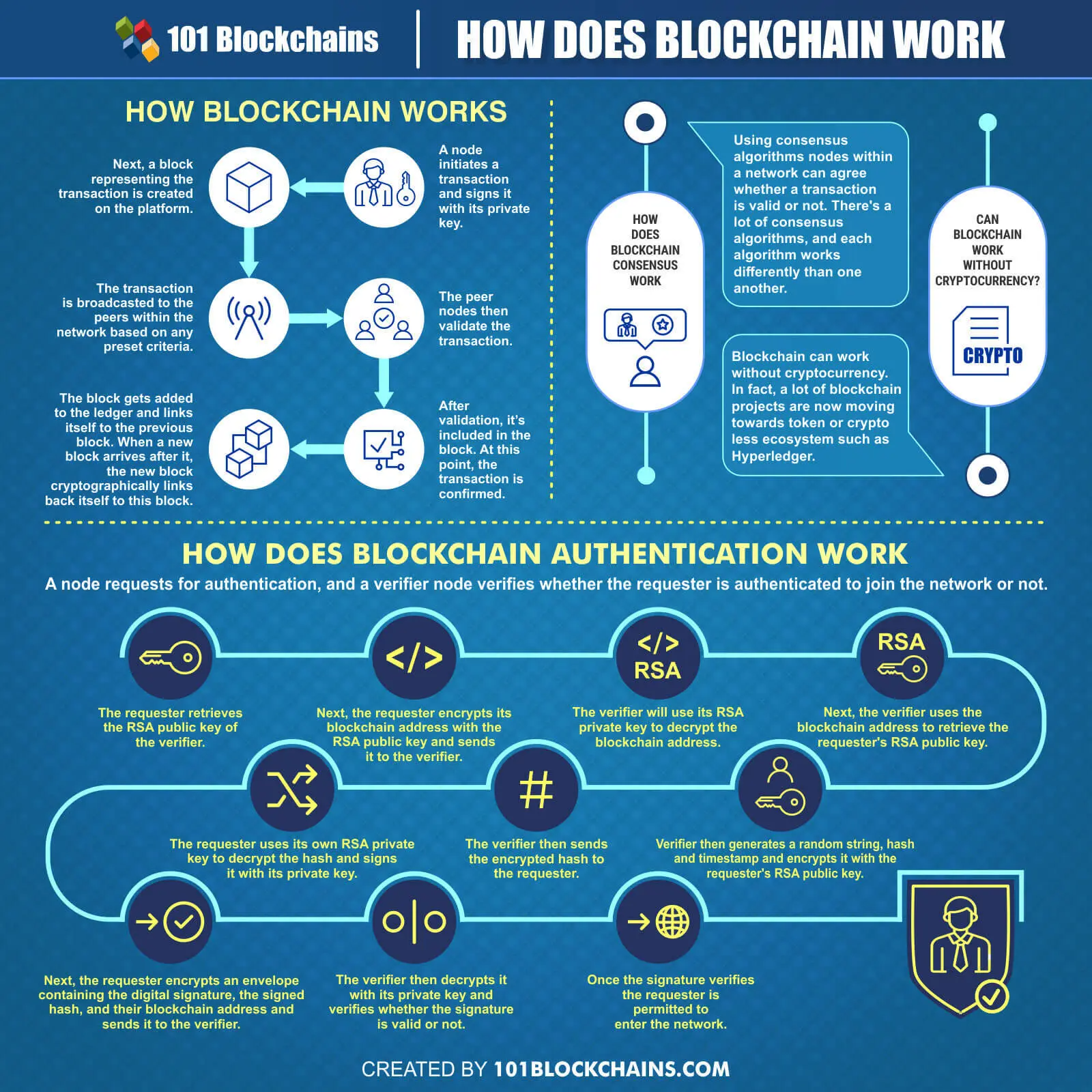Learn how blockchain truly works, master key definitions, and uncover what makes smart contracts so "smart." Dive into the fundamentals, gain valuable insights, and start your blockchain journey today!

- Guides
Georgia Weston
- on July 15, 2022
How to Explain Blockchain Technology to Your Children
Blockchain and cryptocurrencies are almost everywhere when it comes to discussing technology. You must have noticed the dramatic pace of discussions around blockchain technology growing exponentially in recent times. Now, cryptocurrencies and blockchain technology are no more exclusive terms limited to the lingo of tech professionals. As a matter of fact, anyone can learn about blockchain and its exceptional value advantages. Now, it is important to think of ways to explain blockchain to a child before you can move ahead in your learning journey.
The radical growth in popularity of blockchain technology has made it possible that your child may ask you about Bitcoin. If ever the situation arises, you must know the right approach to explain blockchain to your children. The following post helps you figure out some interesting ways to explain the concept of blockchain to children.
Want to learn blockchain technology in detail? Enroll Now in Certified Enterprise Blockchain Professional (CEBP) Course
Why Should You Learn How to Explain Blockchain to a Child?
The first thing that must be revolving around your mind right now must have focused on why a child would need blockchain explained to them. You cannot burden a child with the technical jargon and complex terms associated with the domain of blockchain technology. However, you cannot undermine how blockchain will develop as the technology of the future. Therefore, you would basically prepare a child for the future by explaining blockchain technology to them in simple terms.
Another significant reason for learning how to explain blockchain technology to children is that everyone is not an expert in blockchain. The growing adoption of blockchain technology in diverse use cases across multiple industries has fuelled the interest of senior objectives in the applications of blockchain technology.
On the other hand, blockchain professionals can convey the actual value of blockchain technology to executives and business leaders only in simple terms. The importance of blockchain simple explanation in such cases is more than you could imagine. For example, senior executives, leaders, and decision-makers could understand blockchain-based projects easily, thereby removing the setbacks for project approval.
Definition of Blockchain Technology

Please include attribution to 101blockchains.com with this graphic. <a href='https://101blockchains.com/blockchain-infographics/'> <img src='https://101blockchains.com/wp-content/uploads/2022/07/Blockchain-technology-explained.png' alt='Blockchain technology explained='0' /> </a>
The foremost highlight in the ways to explain blockchain technology to a child would focus on the definition of blockchain. In addition, the answers for “How do you explain blockchain to a child?” would also focus on maintaining simplicity. The simplest definition of blockchain suggests that it is a decentralized public ledger that helps in recording all transactions throughout multiple computers.
One of the biggest highlights of blockchain technology is that the network does not have any central point. How? All the information on the blockchain has been stored across different computers simultaneously, thereby creating difficulties for compromising a single computer or stealing data. However, the definition might be a bit confusing for children as they might wonder about the reasons for recording transactions across multiple computers. What is the special thing about not having a central point in blockchain?
Start learning Blockchain with World’s first Blockchain Skill Paths with quality resources tailored by industry experts Now!
Background of Blockchain
The simple definition of blockchain might still feature some complicated annotations for children. You would obviously encounter multiple responses to “What is blockchain in one sentence?” for explaining the term to children. Now, it is important to explain how blockchain came into existence. Let us assume the example of Yap Island, a small island in the Caroline Islands group in the western Pacific Ocean.
Around 3000 years ago, somewhere around 1000 BCE, the inhabitants of the island used human-sized currency, known as Rae Stones. The Rae Stones weigh almost 8000 pounds and reach a height of almost 12 ft. It would have been a lot difficult to move such humongous units of currency upon exchanging them for goods.
How did everyone manage to run an economy without the facility for trading money physically? Everyone kept a memory of the trade, and transactions had to be announced to the rest of the tribe. All the other members of the tribe maintained a mental ledger of the transaction, thereby showcasing decentralization. You may assume the simple example as an assumption for blockchain explained in detail. However, you would look for alternatives in which you would solve the problem of difficulties in physical trade today. How will the system look like?
Build your identity as a certified blockchain expert with 101 Blockchains’ Blockchain Certifications designed to provide enhanced career prospects.
The Trouble with Centralization
If you want to solve the problem of managing an economy without physical trade, then you would need banks. Banks or other centralized financial institutions would keep records about the ownership of Rae Stones in the Yap Island example. The banker would monitor all the transactions and offer verification regarding credibility of certain transactions.
You must also try to explain blockchain technology based on the essential requirements of the centralized authority. The central authority or the banker must provide security for the ledger to avoid any unwarranted modifications. In addition, the banker must be readily available at all times to ensure transactions between users. On top of it, the banker must have credibility and professionalism to avoid accidental mistakes.
On the contrary, blockchain simple explanation for kids suggests how blockchain removes the centralized authority. You don’t have to worry about the credibility of the banker in the case of blockchain technology. With blockchain, it doesn’t matter whether one user in the network is not trustworthy or a particular user compromises the network. Transactions will happen on the blockchain and will be recorded even if one specific person is not available in the network. How?
Excited to know about decentralized vs centralized concept in blockchain? Check the detailed guide on Decentralized Vs. Centralized: A Detailed Comparison!
Working of Blockchain

Please include attribution to 101blockchains.com with this graphic. <a href='https://101blockchains.com/blockchain-infographics/'> <img src='https://101blockchains.com/wp-content/uploads/2022/07/HOW-DOES-BLOCKCHAIN-WORK.png' alt='HOW DOES BLOCKCHAIN WORK='0' /> </a>
The simple answer for “What is blockchain in one sentence?” points to the example of Yap Island once again. You can find a lot of similarities between the working of blockchain technology and the old transactions on Yap Island. Just like announcing a transaction to the tribe, every transaction on blockchain must be sent across the whole network. The “nodes” or computers in the network must document the transaction details on their copy of the distributed ledger.
You can think of the ledger as an account of all transactions on the blockchain. The computers on the network would compare the ledgers and determine the authenticity of transactions. Therefore, a transaction on a blockchain network is valid only if the majority verifies the truth of the transaction. On top of it, the incorrect ledgers would be updated with the correct data from majority of the nodes.
-
Transaction on Blockchain
Suppose John wants to send 1 Bitcoin to Jessie from his crypto wallet, which contains 10 Bitcoin now. The first step starts when John initiates the transaction by sending it to the network. All the servers on the network record the transaction, with possibility of some nodes registering the wrong information.
In the next step, all the nodes would compare their data and identify whether their copy of the transaction matches with the majority. If anyone has a wrong copy of the transaction data, they can receive a copy of right data from the majority. Finally, all the servers agree on the transaction details, thereby ensuring addition of the transaction to blocks.
Want to become a bitcoin expert? Enroll Now: Getting Started with Bitcoin Technology
-
Decentralization on Blockchain
The simple explanation for recording transactions on blockchain networks shows an interesting example of how decentralization works. On the other hand, the example shows the basic approach for a blockchain transaction. However, you would need an interactive example to explain blockchain to a child by showcasing the importance of decentralization.
Think of a scenario where a 7-year-old kid Michael wants a video game for Christmas and writes a letter to Santa asking the same. However, Michael does not know how to send the letter to Santa and asks his father to deliver the letter. Now, Michael’s father reads the letter before mailing it to Santa. Michael’s father doesn’t like him wasting his time on video games.
So, he changes the content of Michael’s letter and writes the names of a few books for his school. When Michael receives his Christmas gift, he is heartbroken that Santa did not give him a video game. You can notice that the intermediary or middleman, i.e., Michael’s father, disrupted the intended outcome of the transaction by Michael.
Let us assume that Michael uses a North Pole blockchain network that has Santa, his elves, kids from all over the world, and their parents as participants. Michael can send his letter asking for a video game on the blockchain network, and everyone on the network can see his request. When Michael’s father notices the request and tries to modify it, the rest of the network disagrees with his proposal. Therefore, the final transaction recorded on the blockchain is that of Michael’s letter for a video game. The blockchain ensures that Michael can get his transaction completed the way he wants to. Think of the same model applied to financial transactions and other use cases.
Not sure how to build a career in enterprise blockchains? Enroll Now: How to Build Your Career in Enterprise Blockchains
Blockchain and Money
If your child asks you about blockchain, then you are most likely to come across the need to explain cryptocurrencies. The concerns of “How do you explain blockchain to a child?” would also reflect on how blockchain and money and related to each other. Children would grow to find blockchain as one of the integral elements behind cryptocurrencies, one of the modern investment tools.
As a matter of fact, it is important to highlight the example of Bitcoin as the first use case of blockchain technology. You can showcase how Bitcoin uses blockchain technology to establish a peer-to-peer electronic cash system. As described in the basic designs of blockchain explained clearly, all the nodes or miners on the Bitcoin blockchain network document the transfers of Bitcoin. However, blockchain is not all about cryptocurrencies.
Other Uses of Blockchain
The next notable highlight you need to explain blockchain technology to children is an outline of its other use cases. You have to teach children that blockchain technology serves as a distributed ledger that can help in recording almost any type of information. A blockchain network could record weather data, stock prices, details of votes, and healthcare information comprehensively in detail. Blockchain can also help in documenting supply chain information, thereby enabling better efficiency in tracing products. As you can notice, blockchain has many plausible applications beyond the domain of cryptocurrencies.
Significance of Blockchain
The final and most essential aspect of an introduction to blockchain technology for children would focus on its practical necessity. Children must learn about the practical advantages of blockchain technology when applied in real-world use cases. The outline of blockchain explained for children must focus on the way blockchain ensures accurate and timely transactions. It is important to remove the bottlenecks in supply chains alongside ensuring product quality.
Blockchain technology helps in documenting the data regarding product status throughout multiple phases of the supply chain. Imagine the range of benefits you can have by tracking how fresh the vegetables on the supermarket shelves are. The removal of bottlenecks from supply chain in terms of approval and necessary checks makes the process faster. Therefore, you can have better chances of delivery of essential goods and services without any limitations.
Most important of all, blockchain can also serve an important role in the future by supporting the verification of information authenticity. The credibility of information is one of the critical problems in the present times. On the other hand, proper use of blockchain technology can help in verifying which information is true or false. In addition, you will also come across many other innovative uses of blockchain for the world in the future.
Sharpen your blockchain skills and become a blockchain expert with 101 Blockchains Blockchain Expert Career Path.
Bottom Line
The future of blockchain is shaping up with some of the most promising use cases noted in popular sectors such as financial services and supply chain management. In the present times, you can explain blockchain to a child by using interactive examples and stories which resonate with them. You don’t have to burden children with the technical jargon and the pressure of expectations to learn blockchain technology.
However, you must also focus on teaching the crucial aspects, such as removal of centralization and the scope of blockchain beyond cryptocurrencies. The continuous growth in the demand to learn about blockchain technology has translated into the need to explain blockchain technology to children. Find some more interesting stories to help your children learn blockchain.
*Disclaimer: The article should not be taken as, and is not intended to provide any investment advice. Claims made in this article do not constitute investment advice and should not be taken as such. 101 Blockchains shall not be responsible for any loss sustained by any person who relies on this article. Do your own research!





